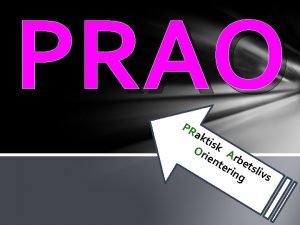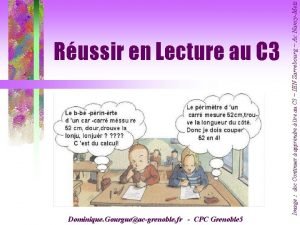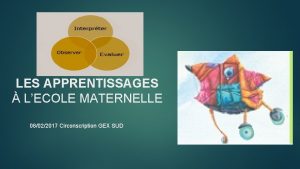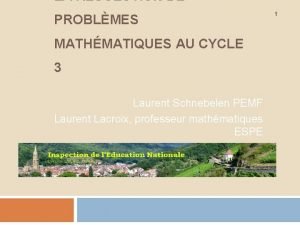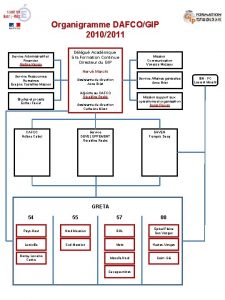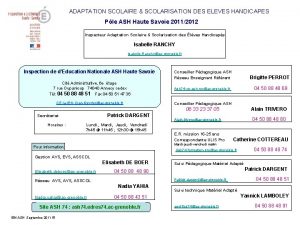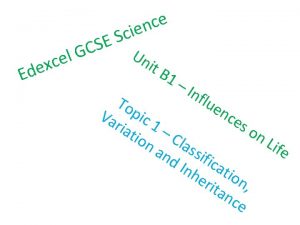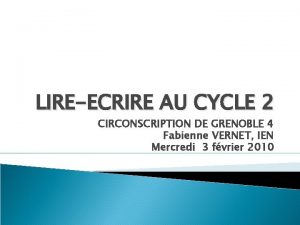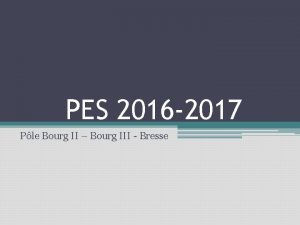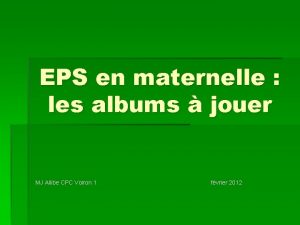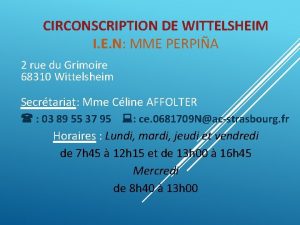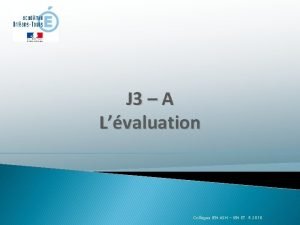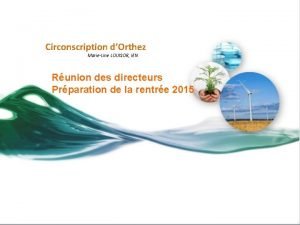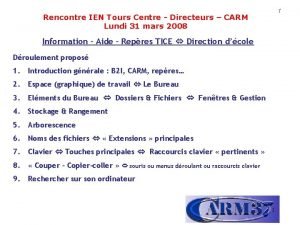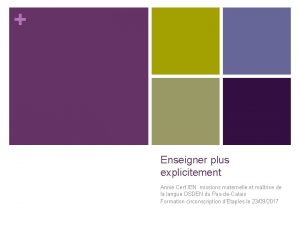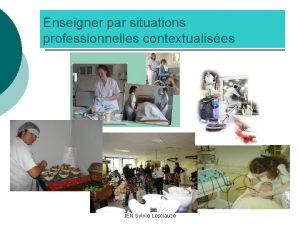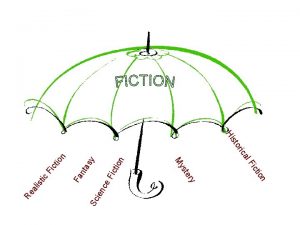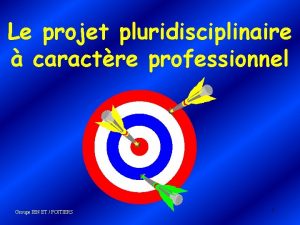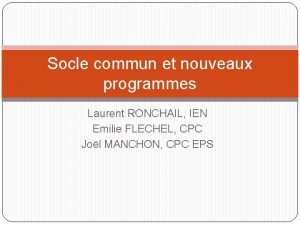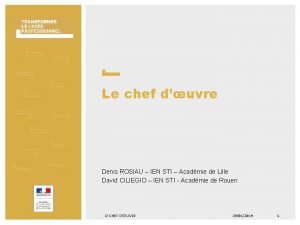e c ien e c x e d



























































- Slides: 59

e c ien e c x e d E c S E S C G U l nit B 1 –I nfl To ue nc Va pic es ria 1 – o tio n C Lif n a las e nd sific Inh ati eri on, tan ce

Classifying Organisms are classified based on how closely related they are to each other, this includes: • Species – groups of organisms that have many features in common • Genus – contains several species with similar characteristics • Family – comprising of several genera • Order – comprising of several families • Class – comprising of several orders • Phylum – comprising of several classes

The 5 Kingdoms • • • Organisms can be grouped into 5 Kingdoms Animalia Plantae Fungi Protoctista Prokaryotes

Animalia Organisms Jellyfish, worms, arthropods, molluscs, echinoderms, amphibians, fish, reptiles, birds and mammals. Plantae Seed bearing plants and non-seed bearing plants Prokaryotes Bacteria and primitive algae Protoctista Single-celled organisms Fungi Moulds, mushrooms and toadstools

Animalia (Animals) The main features of animalia (animals) are: • They are multicellular – Made up from more than one cell. • Their cells do not have cell walls. • They do not contain chlorophyll. • They feed heterotrophically – They do not make their own nutrients (i. e. they have to eat food to survive. )

Plantae (Plants) The main feature of Plantae (Plants) are: • They are multicellular • Their cells have cell walls • They contain chlorophyll • They feed autotrophically – They produce their own nutrients via processes like photosynthesis.

Fungi (Fungus) The main feature of Fungi (Fungus) are: • They are multicellular • Their cells have cell walls • They do not contain chlorophyll • They feed saprophytically – They get nutrition from dead organic matter.

Protoctista The main feature of Protoctista (Protists) are: • They are unicellular – they are only made of one cell. • They have a nucleus that contains genetic information.

Prokaryotes The main feature of Prokaryotes are: • They are unicellular • They have no nucleus – their genetic information floats around.

What about things like Viruses? Viruses are not classed as living things for a few reasons. • Viruses cannot reproduce without using a host cell. • They cannot control their own metabolism – basically they cannot organise the chemicals that form them.

Phylum Chordata – err… what? • A Phylum covers a whole host of different animals. • Chordata are animals that have a supporting rod or chord running the length of their body. • The best known examples of the Phylum Chordata are the vertebrates (animals with a backbone).

Vertebrates are also grouped based on several characteristics. • How they absorb oxygen – lungs, gills and skin • How they reproduce - internal or external fertilisation, oviparous (egg laying) or viviparous (give birth to live young) • How they control their body temperature Thermoregulation – homeotherms (warm blooded) and poikilotherms (cold blooded)

The main vertebrate groups Mammals Fish Reptiles Amphibians Birds

However some animals are very difficult to assign to a group The platypus has a beak, fur, webbed feet, lays eggs, is venomous, and the females produce milk! It is actually what is called a monotreme (You don’t need to know that but it’s interesting!) Echidna’s are also very mammal like but they lay eggs as well! They are another example of a monotreme.

HIGHER ONLY!!! Binomial Classification • This is a method first used by Karl Linnaeus to help classify organisms. • The binomial part comes from the fact that each animal name is made from two words. (Remember a Bicycle has two wheels) It is important because it allows scientists around the world to identify and describe certain species very quickly.

HIGHER ONLY!!! Examples of Binomial Classification The first word is known as the Genus. The Genus is a group of species more closely related to one another than any other group of species. • E. g. Panthera is the Genus for cats. The second word tells us what the specific species is e. g. • Panthera tigris is a tiger • Panthera leo is a lion • Panthera onca is a jaguar.

HIGHER ONLY!!! Why is this useful? • Binomial classification is useful because it means that scientists can easily identify an exact species. • This is useful for studying and also for the conservation of these particular animals.

So classification is dead easy then? • Not necessarily. Accurate classification can be complicated for a few reasons. Here are some examples. Example 1 There might be some variation within a species. For example different patterns on the skin, different sizes, different shaped body parts.

HIGHER ONLY!!! Unusual and Difficult Classifications Example 2 Ducks have many different hybrids – (crosses of various types of duck) You can also get other hybrid animals. e. g. Ligers Wholphins Zeedonks

HIGHER ONLY!!! Unusual and Difficult Classifications Example 3 • Ring species happen when a single species get spread out in a circular pattern over a wide area. • Populations next to each other vary slightly but can interbreed. • At opposite ends of the ‘ring’ the species have become so different that they cannot breed with each other anymore. • Common examples of this are types of seagull and salamanders.

HIGHER ONLY!!! The salamanders can breed with neighbouring ones, but not ones that are very different (across from them. )

Keys • Keys are a useful way of identifying different organisms. • They usually involve questions that lead you to an ‘answer’. In this case the ‘answer’ is the organism that matches the description.

Does it lay eggs? Yes No Does it have gills to breathe? Yes Does it have warm blood? Yes No Does it fly or have wings? ______ Yes ______ No Does it live on land in water? ______ Yes ______ No ______ Complete the missing boxes with mammal, fish, bird, reptile or amphibian.

Adaptations • Animals have adaptations that help them to survive in the conditions in which they live. • There are two extreme environments that you need to be particularly aware of:

Extreme Environments Example 1 Polar Regions – These areas near to the Earth’s Poles. They are a cold and hostile environment. How are these animals adapted to living in Polar regions?

Extreme Environments Example 2 Deep-Sea Hydrothermal Vents – Animals that live near these have to cope with large temperature changes and extreme pressures as well as complete darkness. An example is the Deep-Sea Pompeii Worm These have several adaptations, including: • Very sensitive tentacles instead of eyes. • A layer of bacteria on its body to protect it from heat. It can handle temperature changes of 40 -90 o. C. • Its body can cope with pressures over 200 times higher than at sea-level.

Charles Darwin and his Theory of Evolution by Natural Selection There are 6 main points to remember! Variation – most populations of organisms contain individualswhich vary slightly. Over-production – most organisms produce more young than will survive to adulthood Struggle for existence – There will be competition between organisms to find things like food, shelter and a mate. They also need to avoid being eaten! Survival- those with advantageous characteristics are more likely to survive this struggle (Survival of the Fittest). Advantageous characteristics inherited – better adapted organisms are more likely to reproduce successfully passing on the advantageous characteristics to their offspring. Gradual change – over a period of time the proportion of individuals with the advantageous characteristics in the population will increase compared with the proportion of individuals with poorly adapted characteristics, and the poorly adapted characteristics

Classic Examples Number 1 – The Peppered Moth There are two variations of peppered moth. A dark type and a light type. The dark type is a genetic mutation. 100 years ago most peppered Moths were the light type. Now most of them (in cities especially) are the dark type. Can you explain why?

Explanation • The light type is well camouflaged against trees. • The dark type camouflages well against dirty buildings. • Over the last 100 years more coal has been burnt resulting in darker buildings. The dark type is therefore now more likely to survive and pass on its genes to its offspring.

Classic Examples Number 2 – The Giraffe Scientists have found ancient giraffes with much shorter necks. Many years ago giraffes could have short or long necks. Now all giraffes have long necks Can you explain why?

Explanation • The long necked giraffes were able to eat leaves higher up than ones with short necks. • If there was a shortage of food the long-necked giraffes were more likely to get food. The long necked giraffes were therefore more likely to survive, breed and pass on ‘long necked’ genes to its offspring.

Continuous Variation • Continuous Variation – For any species a characteristic that changes gradually over a range of values shows continuous variation. Examples of such characteristics are: • height • weight • foot length.

Continuous Variation cont… • If you record the heights of a group of people and draw a graph of your results, it usually looks something like this: • The more people you measure, and the smaller the categories you use, the closer the results will be to the curved line. This shape of graph is typical of a feature with continuous variation. Weight and foot length would give graphs similar in shape to this. This is called a normal distribution.

Discontinuous Variation A characteristic of any species with only a limited number of possible values shows discontinuous variation. Here are some examples: • gender (male or female) • blood group (A, B, AB or O) • eye colour.

Discontinuous Variation cont… There is no guaranteed regular distribution pattern for discontinuous variation.

Causes of Variation • There are two main causes of variation: – Inherited/Genetic Variation – Environmental Variation

Inherited/Genetic Variation in a characteristic that is a result of genetic inheritance from the parents is called inherited variation. Here are some examples of inherited variation in humans: • eye colour • hair colour • skin colour • lobed or lobeless ears. Gender is inherited variation too, because whether you are male or female is a result of the genes you inherited from your parents.

Environmental Variation caused by the surroundings is called environmental variation. Here are some other examples of features that show environmental variation: • your language and religion • flower colour in hydrangeas - these plants produce blue flowers in acidic soil and pink flowers in alkaline soil.

HIGHER ONLY!!! How are new Species made? Speciation is the process through which new species arise. One of the main reasons for this is due to a group of animals becoming isolated and adapting to their new environment. Scientists think that Humans and Chimpanzees speciated apart ~4. 1 million years ago.

Evidence for Evolution • There is now a lot of evidence that supports Darwin’s theory. • Two of these are the research of DNA and the development of resistant organisms.

Warfarin Resistant Rats, an evolutionary example. • Warfarin was a rat poison used widely in the 1940 s and 1950 s. • Most rats would die within a few days of eating it. • Within 10 years most rats had become resistant to warfarin. • There had always been a few rats resistant to warfarin. It was these rats that had survived and were able to pass on their resistant genes.

DNA evidence • Darwin was able to observe many differences between species on his travels. • One of the most well known examples are finches. • Scientists can now check the similarities and differences in organisms by checking their DNA and genetic information.

How Scientists Share Ideas There are three main ways in which scientists share and evaluate each others ideas. • Writing articles in scientific journals. • Having their work checked by other scientists to see if it is correct (peer review). • Attending conferences and presenting their findings to other scientists.


Cells, Genes and DNA • You should be familiar with a basic cell. • When we look at genes and DNA we look at the nucleus. • This is where all the genetic material is stored.

A closer look… • The nucleus contains chromosomes. • Chromosomes are made up from long chains of DNA (Deoxyribonucleic Acid). • Sections of the DNA that perform a certain function are known as genes.

The DNA is in a structure called a double-helix

Genes • Your genes are a set of instructions for making different types of proteins. • Proteins are used by the body for all sorts of things. • Sometimes you get genes in alternative forms, these can give rise to inherited changes. • These are known as alleles.

Some Key Terms that you need to know • Dominant – A gene that will always show. • Recessive – A gene that only shows when paired with another recessive allele. • Homozygous – person possessing two alleles of the same type • Heterozygous – person possessing two alleles of different types • Phenotype – A description of what an organism actually looks like • Genotype – A description of the different alleles that the organism contains.

A simplified example: Eye Colour • In eye colour the brown eye allele is dominant, so we call it B, and the blue eye is recessive, so we call it b: BB Bb bb Homozygous brown-eyed parent Heterozygous brown-eyed parent Blue-eyed parent (Homozygous) Notice that in the heterozygous parent (hetero- means different), the brown eye allele dominates (is stronger than) the blue eyed allele. Therefore the parent has brown eyes. (Its phenotype)

Working out inheritance • There a few ways of doing this. • Example 1 – Genetic Diagram

Working out inheritance A homozygous brown-eyed parent and a blueeyed parent: Gametes (Sex cells): X BB Parents: bb B B b b Bb Bb (FOIL) Offspring: All offspring have brown eyes

Another method – Punnet Squares Example 2: A heterozygous brown-eyed father and a blue-eyed mother: Father B b b Bb bb Mother 01/11/2020 Chance of a blue eyed or brown eyed child is 50%

Can two brown eyed parents have a blue eyed child? Father B b B Bb Bb bb Mother Yes! If both parents are heterozygous. There is a 25% chance of having a blue eyed child.

Final Method – Pedigree Analysis • This is where you look at somebody’s family tree in order to find out about possible inherited features. It is often used with diseases.

Genetic disorders • Sometimes genes can have adverse (bad) effects on people. These are known as genetic disorders. • Two examples you need to know about are Sickle Cell disease and Cystic Fibrosis

Sickle Cell Disease (SCD) • This is caused by a recessive allele, so a sufferer must have two copies of it. • It causes red blood cells to become sickle shaped so that they cannot carry oxygen efficiently. • People with the disease become easily tired and short of breath, it can also lead to joint pain due to blood vessels being clogged up. • In some cases death can be caused due to blocked up blood vessels.

Cystic Fibrosis (CF) • Cystic Fibrosis is also caused by a recessive allele. • It causes mucus to build up in the lungs and digestive system. • This makes it difficult for sufferers to breathe and digest food. • The average lifespan for someone with CF is about 37 years in the UK.

HIGHER ONLY!!! Genetic Screening and Genetic Disorders • Doctors will often use pedigree charts and other information to work out the likelihood/probability of a child developing a genetic disorder. • A doctor will then be able to talk to parents and discuss with them the risks of trying for a child. • They normally do this if there is a family history of a genetic disorder.

